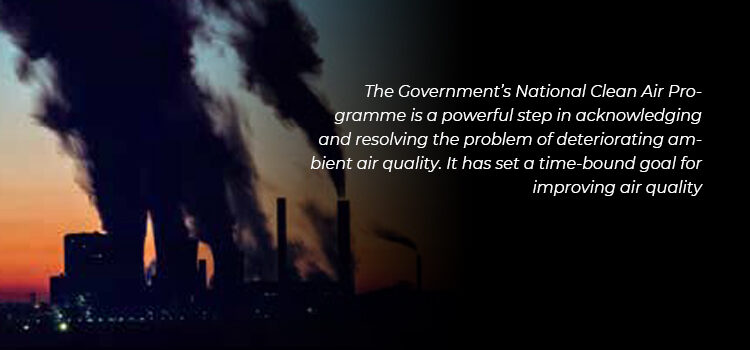Globally, air pollution is a silent killer. The air pollution levels in India are among the highest in the world, posing a serious threat to the country’s health and economy. Almost all of India’s 1.4 billion people are exposed to unhealthy levels of ambient PM 2.5 – the most harmful pollutant – emanating from multiple sources. Exposure to PM 2.5 can cause such deadly illnesses as lung cancer, stroke, and heart disease.
PM 2.5 comes from a variety of sources. Some of the most common sources include emissions from burning fossil fuels such as coal or oil and biomass such as wood, charcoal, or crop residues. PM 2.5 can also come from windblown dust, including natural dust and dust from construction sites, roads, and industrial plants.
Agriculture, industry, power plants, households, and transport all contribute significantly to the formation of secondary PM 2.5. This secondary form spreads farther and wider than primary PM 2.5.
India is taking many significant steps in responding to this problem.
The Government is envisaging a revision of its ambient air quality standards and has strengthened vehicular and industrial emission standards in recent years. A strong emphasis on expanding renewable energy, promoting electric vehicles, and providing LPG cooking fuel to millions of households are some examples of the actions India is taking to combat air pollution.
The Government of India’s National Clean Air Programme (NCAP) is a powerful step in acknowledging and resolving the problem of deteriorating ambient air quality. The NCAP has set a time-bound goal for improving air quality across the country, with a focus on around 132 “non-attainment” cities where air pollution standards are not being met. The NCAP provides cities with an overall framework for developing air quality management plans, with guidance on policies across various sectors.
The Government has set aside about $1.7 billion to fight air pollution over the next five years for the 42 Indian cities with million-plus populations – provided they reduce their air pollution levels by 15 per cent every year. This is the world’s first performance-based fiscal transfer funding programme for city air quality management.
Recognising the need for concerted cross-jurisdiction and airshed level action and coordination, Parliament approved a law in August 2021 to establish the Commission of Air Quality Management in the National Capital Region and adjoining areas. The World Bank supports India in tackling air pollution under its Country Partnership Framework. The most excellent effort is placed on the IndoGangetic Plain, where the population density and pollution intensity are the highest and most concerning.
Building on the already underway work, the World Bank programme is introducing tools to support state and regional air quality management approaches. These initiatives will help formulate India’s first State Air Quality Action Plans and India’s first large Airshed Action Plan for the Indo Gangetic Plains (IGP), spanning seven union territories and states.
The World Bank is also supporting the National Knowledge Network in establishing a training programme to enhance the capacity and skills of citizens to take on new jobs in air pollution management. In the IGP states, the World Bank programme supports the Network in connecting with academic institutions and city and state practitioners to carry out air quality management work.
Air quality management is an ongoing process. It needs to be integrated into the Government’s capabilities and incorporated into the behaviour of businesses and individuals. This requires sufficient funding and a sustained focus on building capacity. The good news is that many other countries have demonstrated that air pollution control is possible when there is a strong commitment and a well-targeted and cost-effective plan in place.
What’s more, a study by the World Bank and the International Insititure for Applied Systems Analysis show that focusing on air pollution through a clean air pathway out to 2030 could bring about significant climate change co-benefits for India. In fact, most of the policy measures and management practices are well known. If pursued, they have the potential to reduce India’s air pollution within a single generation.














 G20 podium
G20 podium

